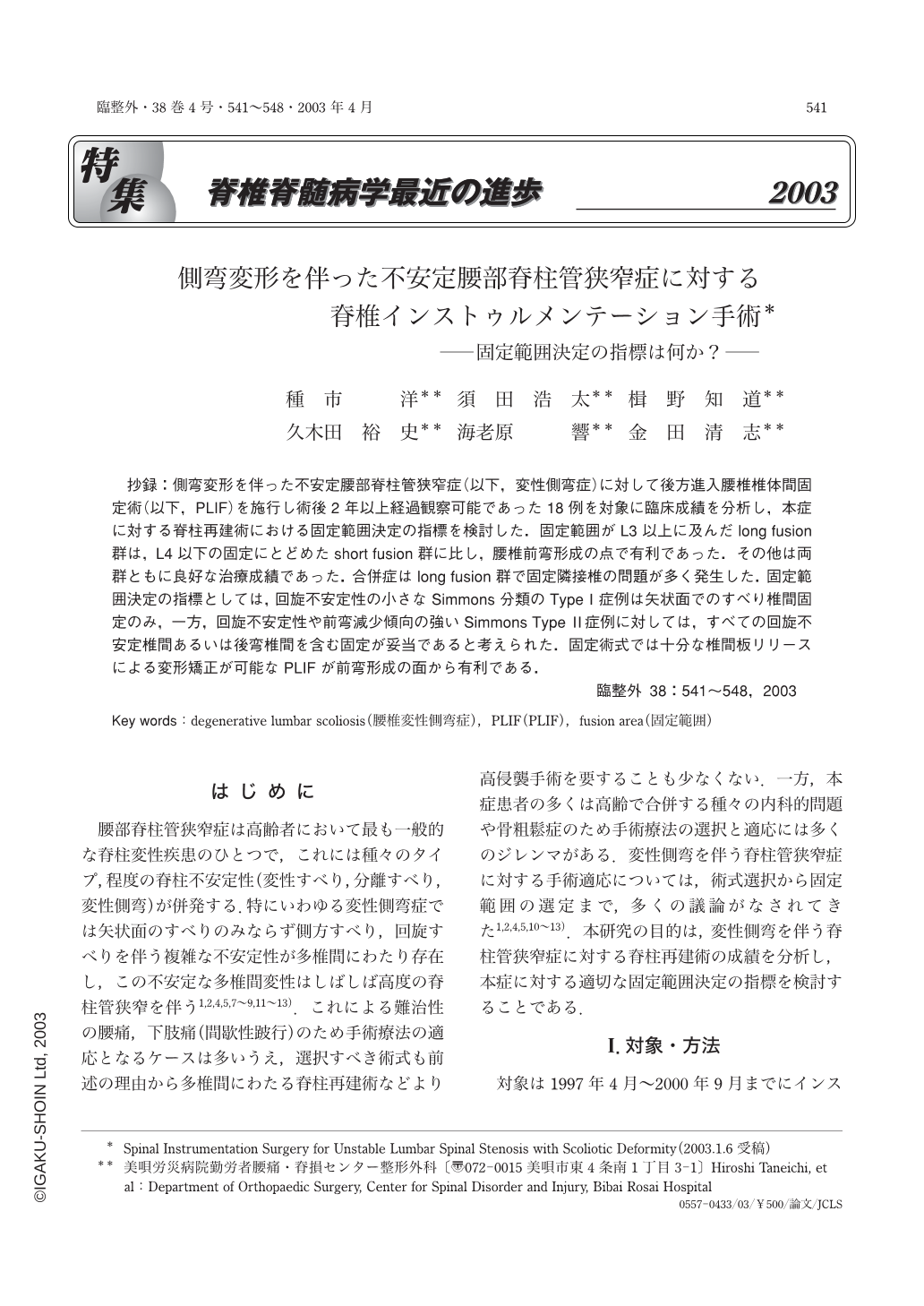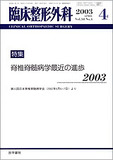Japanese
English
- 有料閲覧
- Abstract 文献概要
- 1ページ目 Look Inside
抄録:側弯変形を伴った不安定腰部脊柱管狭窄症(以下,変性側弯症)に対して後方進入腰椎椎体間固定術(以下,PLIF)を施行し術後2年以上経過観察可能であった18例を対象に臨床成績を分析し,本症に対する脊柱再建術における固定範囲決定の指標を検討した.固定範囲がL3以上に及んだlong fusion群は,L4以下の固定にとどめたshort fusion群に比し,腰椎前弯形成の点で有利であった.その他は両群ともに良好な治療成績であった.合併症はlong fusion群で固定隣接椎の問題が多く発生した.固定範囲決定の指標としては,回旋不安定性の小さなSimmons分類のTypeⅠ症例は矢状面でのすべり椎間固定のみ,一方,回旋不安定性や前弯減少傾向の強いSimmons Type Ⅱ症例に対しては,すべての回旋不安定椎間あるいは後弯椎間を含む固定が妥当であると考えられた.固定術式では十分な椎間板リリースによる変形矯正が可能なPLIFが前弯形成の面から有利である.
The purpose of this study was to clarify optimum fusion area in treatment of unstable lumbar spinal stenosis with scoliotic deformity. Eighteen patients with degenerative lumbar scoliosis who underwent PLIF were reviewed with minimum 2-year follow-up. They were divided into two categories according to uppermost fused vertebra (L3 or higher:long fusion;L4 or lower:short fusion). Regarding clinical outcomes, postoperative lumbar lordosis following long fusion was better than that following short fusion. There was no significant difference in clinical outcomes between these two categories. Postoperative problems in adjacent segments occurred only in the patients who underwent long fusion. In the patients with Simmons' type Ⅰ scoliosis, all segments with spondylolisthesis in the sagittal plane should be included in the fusion area. On the other hand, those with rotatory instability and/or kyphotic deformity should be fused in type Ⅱ scoliosis. PLIF, which allowed extensive intervertebral release, has great advantages in restoring physiological lumbar lordosis.

Copyright © 2003, Igaku-Shoin Ltd. All rights reserved.


